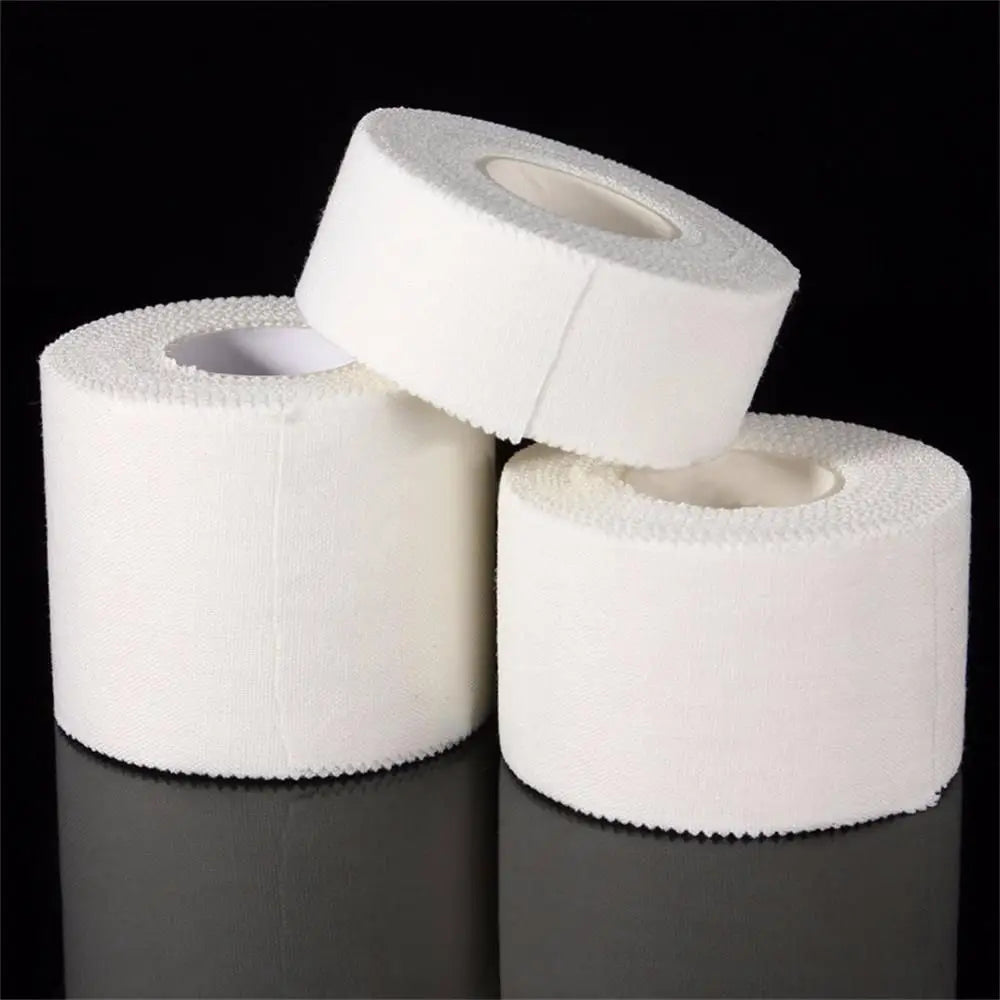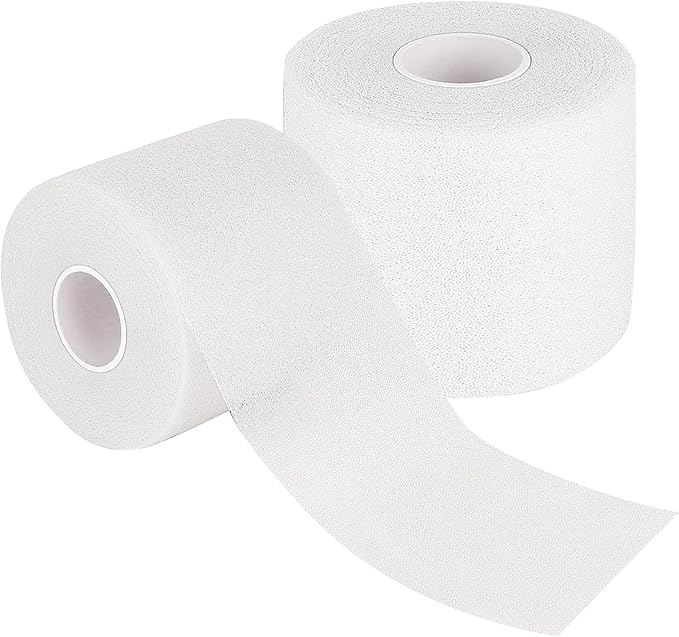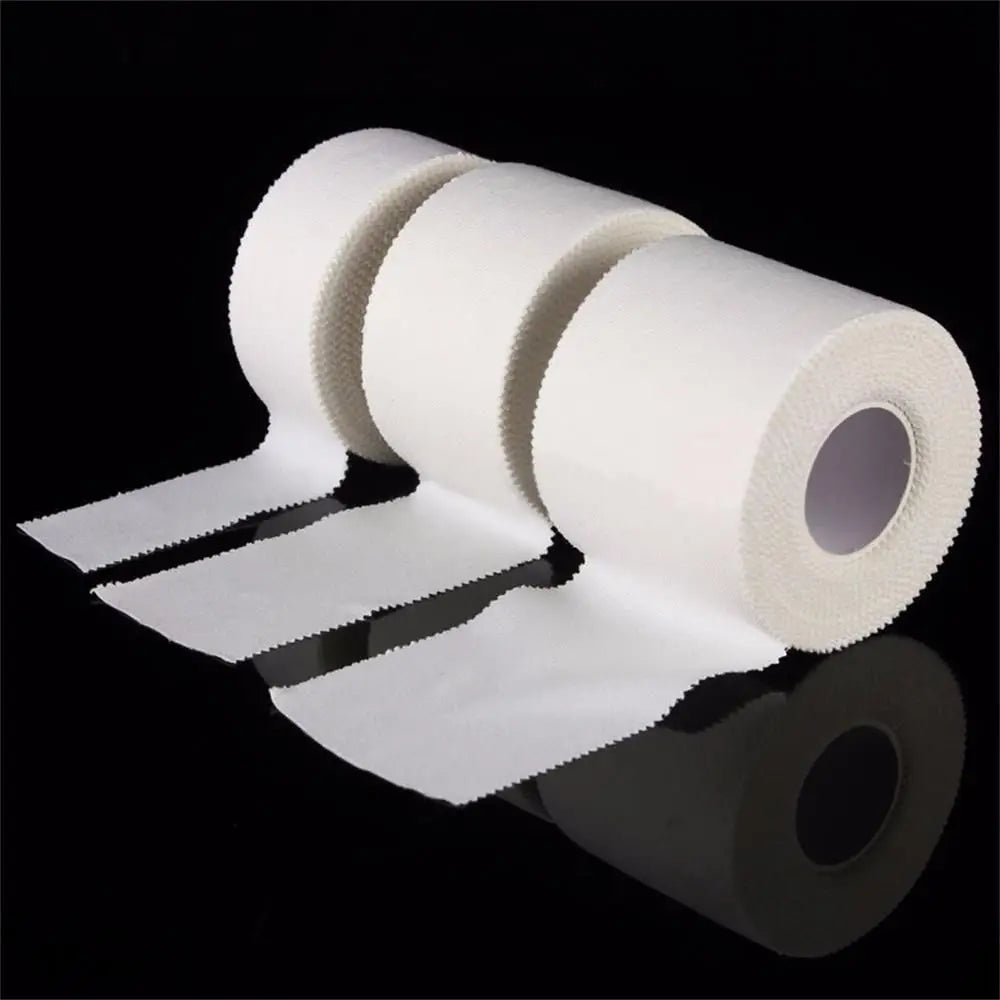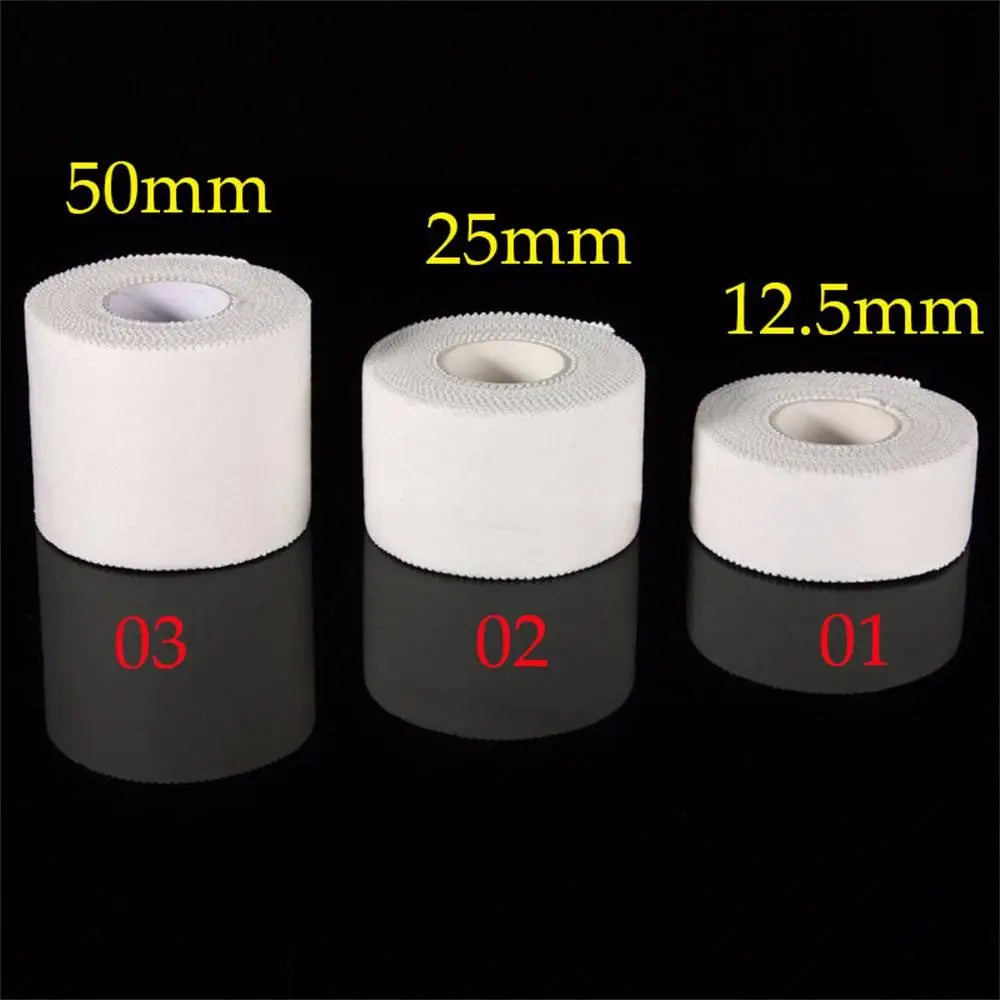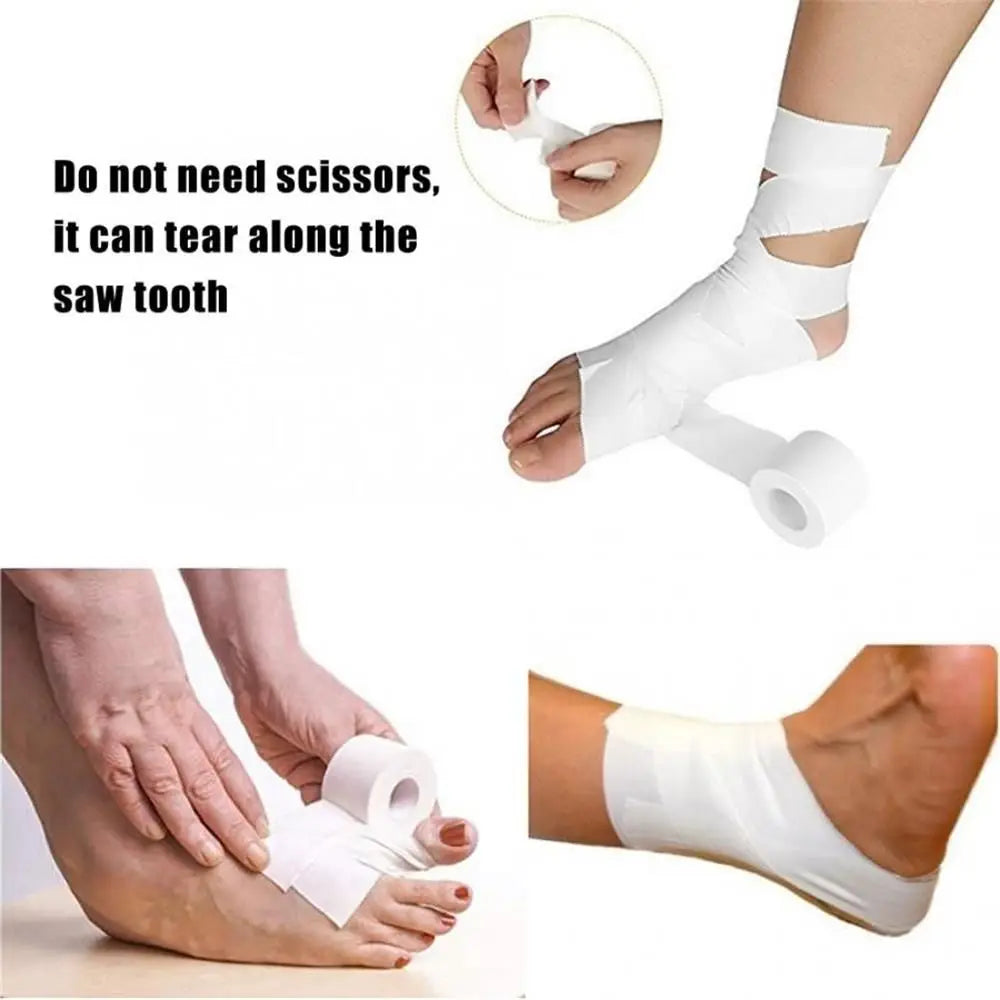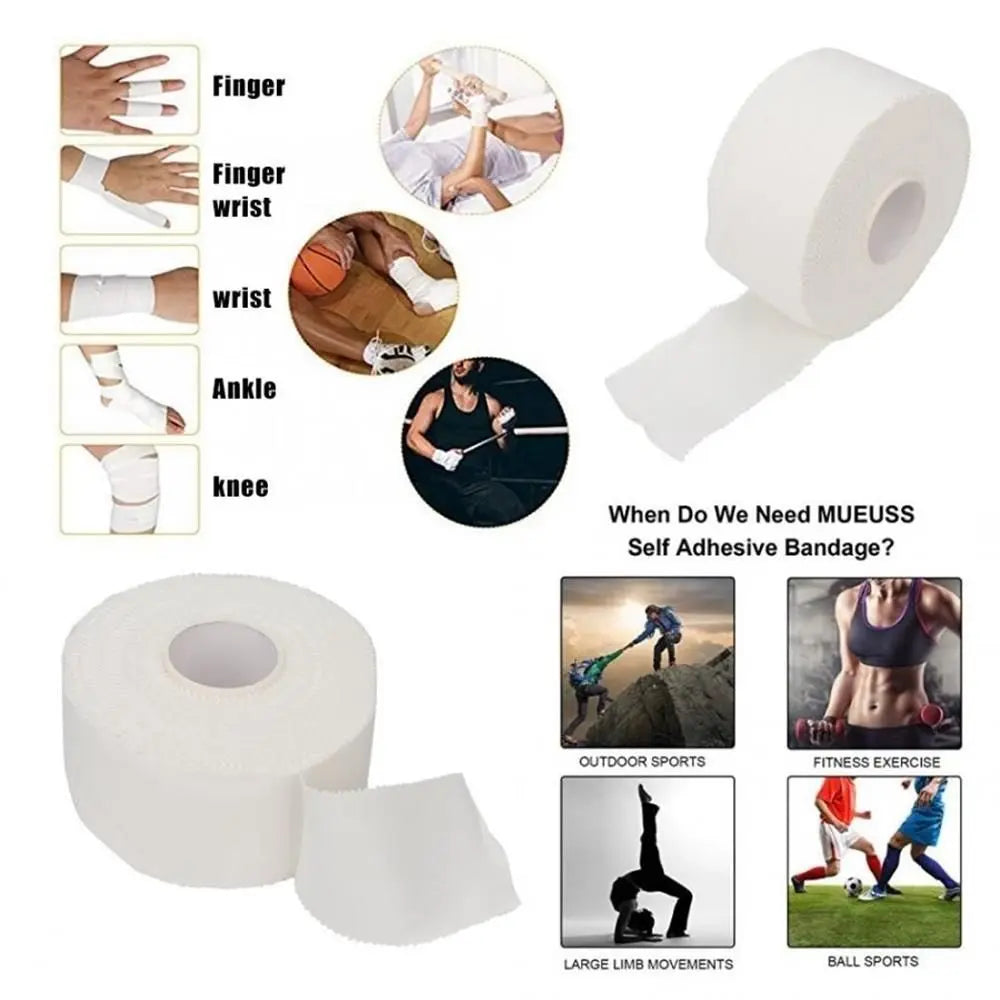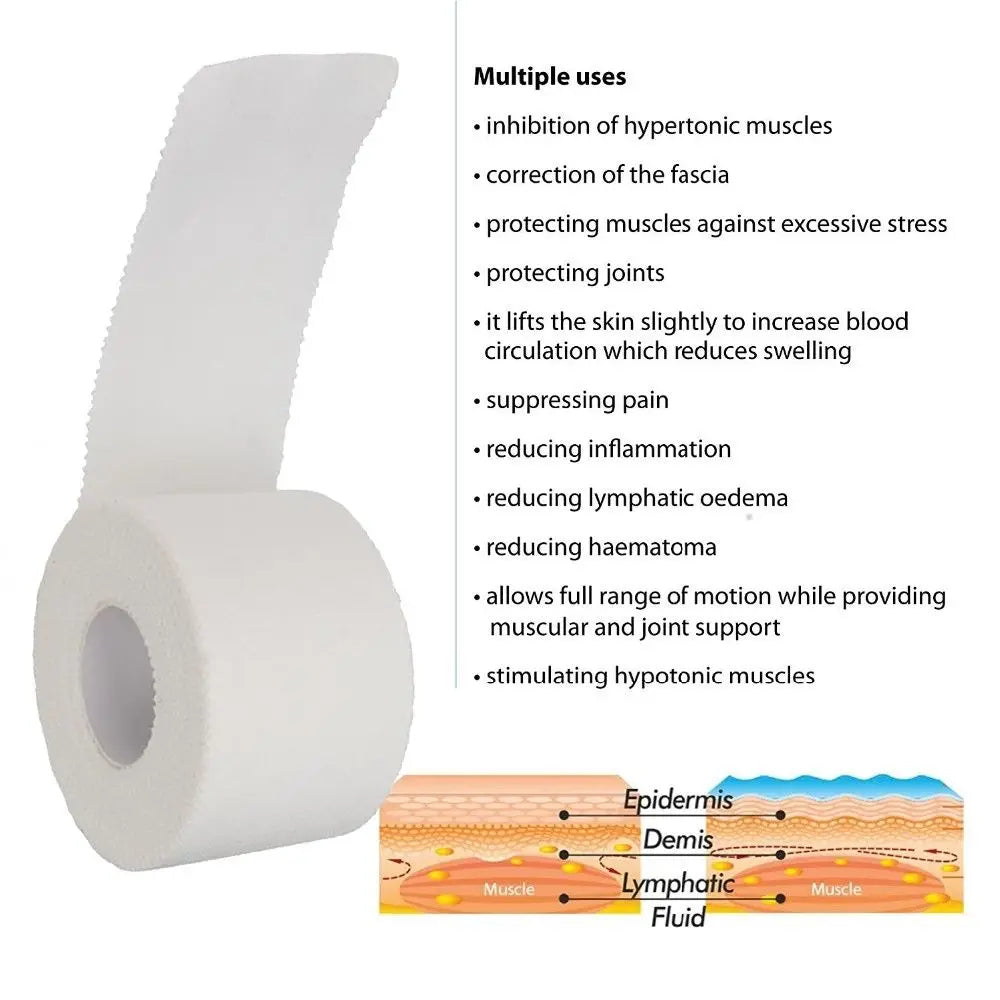My Store
Sports Body Tape
Sports Body Tape
Couldn't load pickup availability
What Does Sports Tape Actually Do?
If you’ve ever watched a basketball game, a soccer match, or even the Olympics, you’ve probably noticed colorful strips of tape on athletes’ shoulders, knees, or ankles. That’s sports tape—a tool that might look simple but plays a big role in protecting and supporting the body. Whether you’re a pro athlete or just someone trying to avoid twisting an ankle during a weekend run, sports tape can be a game-changer. Let’s take a closer look at what it does, the different types out there, and why so many athletes swear by it.
1. What Is Sports Tape Used For?
At its core, sports tape helps provide support and stability. It’s often used to:
- Prevent injuries: Wrapping weak or vulnerable areas (like ankles or wrists) can help stop awkward movements that might lead to sprains or strains.
- Support existing injuries: If you’ve ever had a sore knee or a pulled muscle, you know how frustrating it can be. Sports tape offers extra support, making it easier to move without worsening the injury.
- Reduce pain and swelling: Certain types of tape, like kinesiology tape, are designed to lift the skin slightly, which can improve blood flow and reduce inflammation.
2. Different Types of Sports Tape
There’s no one-size-fits-all when it comes to sports tape. Here are the main types you’ll see:
- Athletic tape: This is the classic white, stiff tape you’ll see trainers wrapping around ankles or wrists. It’s designed to restrict movement, offering strong support to prevent injuries.
- Kinesiology tape (or KT tape): The colorful, stretchy tape you often see on athletes’ arms or legs. It moves with your body and is meant to help with circulation and pain relief.
- Elastic adhesive bandages: These are stretchable but firm tapes used to compress swollen areas or offer light support.
3. Why Do Athletes Use It?
Sports tape can make a real difference, both physically and mentally.
- Better stability: For athletes with weak joints or previous injuries, taping can offer peace of mind by providing extra stability.
- Pain relief: KT tape, in particular, is popular for its ability to reduce discomfort during activity without limiting motion.
- Faster recovery: After an intense workout or game, using sports tape can reduce muscle fatigue and swelling, helping you recover faster.
4. Does It Actually Work?
Sports tape isn’t magic, but it can be effective when used correctly. For minor injuries, it can provide enough support to keep you moving safely. However, it’s not a cure-all—it works best alongside proper rest, physical therapy, and strength training.
5. How to Apply It Properly
Getting the most out of sports tape comes down to proper application. Here are a few quick tips:
- Clean and dry the skin before applying the tape. Moisture or oils can make it peel off.
- Use the right tension: For athletic tape, you’ll want it snug but not cutting off circulation. With KT tape, you’ll need to stretch it slightly when applying, but not too much.
- Know when to remove it: Sports tape isn’t meant for all-day wear. Remove it after your activity to let your skin breathe.
Final Thoughts
Sports tape might look simple, but it offers real benefits when it comes to supporting your body and preventing injury. Whether you’re running a marathon or just trying to keep up with your weekend soccer team, it can give you the extra boost you need to stay strong and pain-free. Just remember—it’s a tool, not a fix-all. Pair it with proper training, recovery, and care, and you’ll be good to go.
Share
